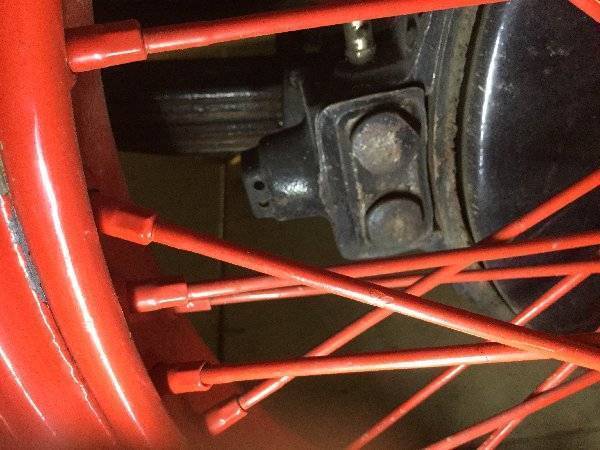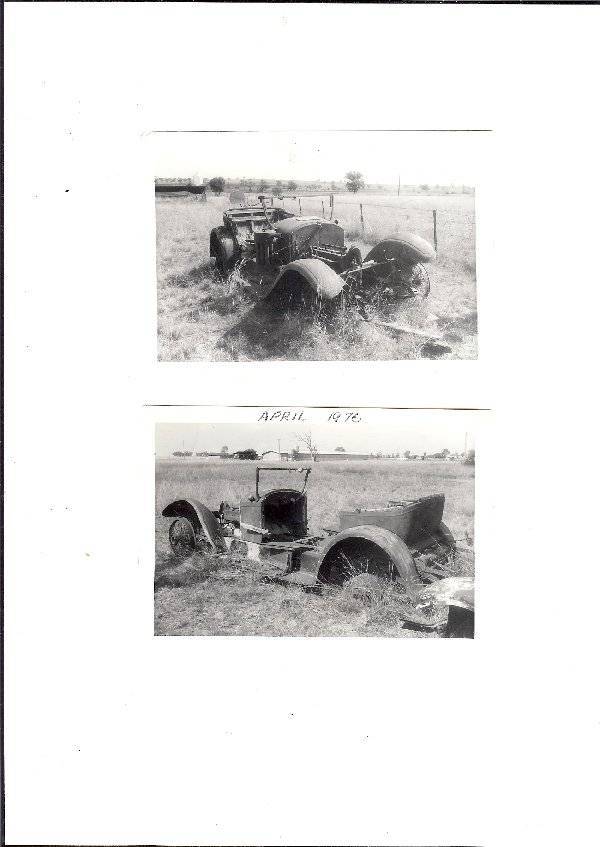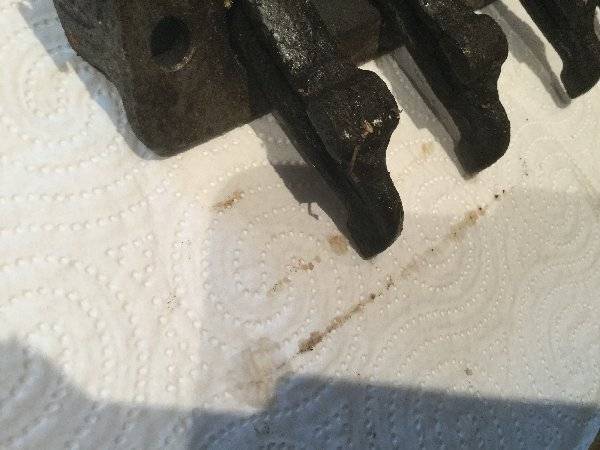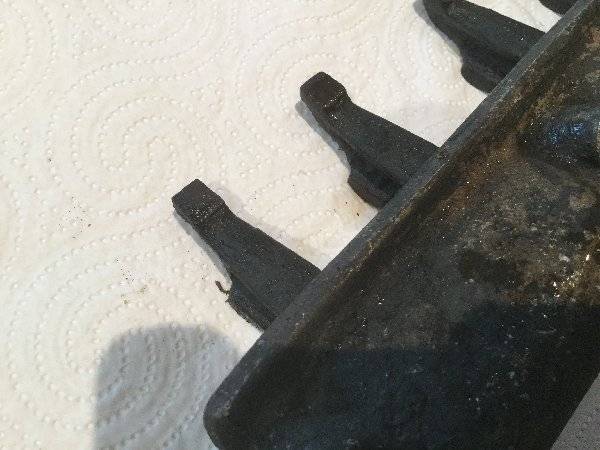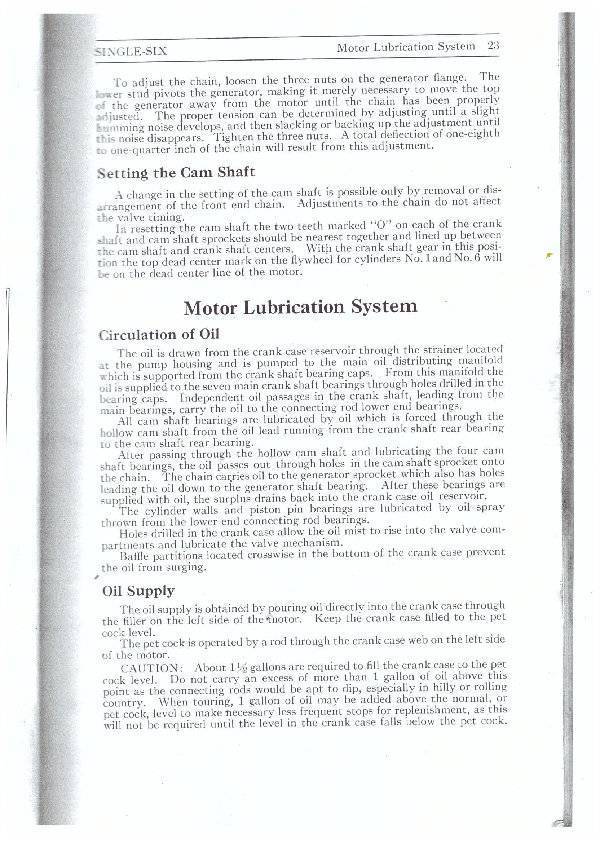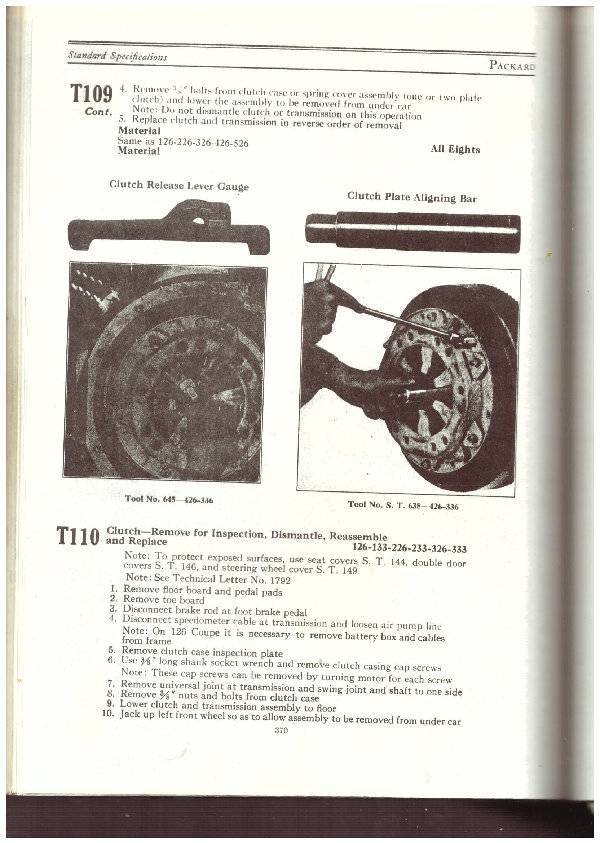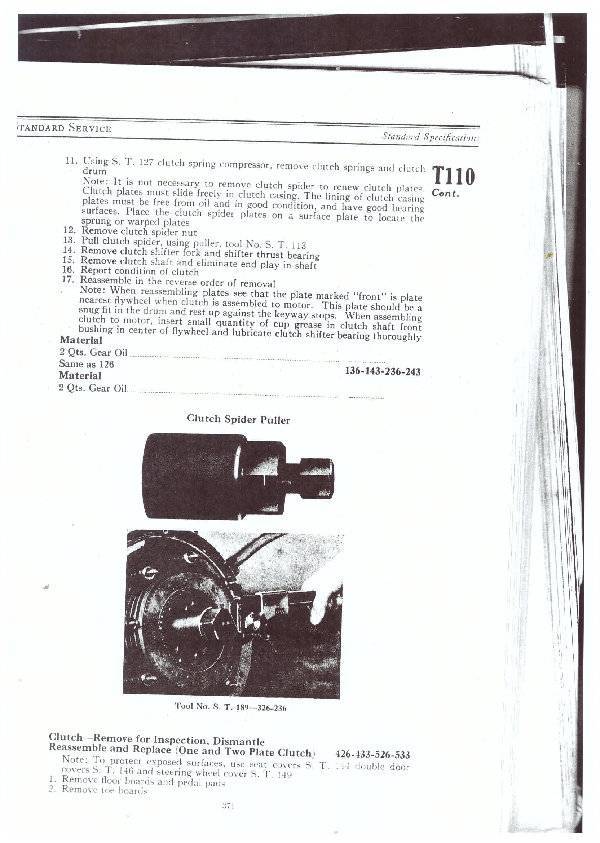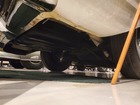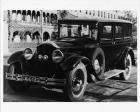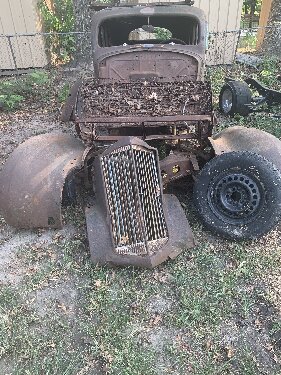|
Re: Broken cast iron end of Owen Dyneto generator for 1931 Packard
|
||||
|---|---|---|---|---|
|
Home away from home

|
Its not just the generator that has a brittle cast iron end.
Starter motors from the same era can fail https://packardinfo.com/xoops/html/modules/newbb/viewtopic.php?topic_id=21518&forum=1&post_id=209324#forumpost209324
Posted on: 2019/10/28 15:52
|
|||
|
||||
|
Re: 1929 626/633 Classic Car Rally Prep Recommendations
|
||||
|---|---|---|---|---|
|
Home away from home

|
Thanks for the clarification. I am not averse to long distance touring, but nothing like a trip of 13,000 kms but in my case the car has to be essentially as original otherwise I would get a later model.
However to your question " what are known areas of parts breakage and frustration under normal touring?" I can't think of anything on the 6th Series cars that I would rate as a weakness under normal touring. They are robust. I have never heard of a broken axle but I guess it has happened. Everything on these cars tends to be over engineered and well made. I thought of another issue. the Bijur lubrication system can be a problem. If any of the drippers become blocked that part will not be lubricated. Replacing the system with grease nipples is worthwhile.
Posted on: 2019/9/10 17:25
|
|||
|
||||
|
Re: 1929 626/633 Classic Car Rally Prep Recommendations
|
||||
|---|---|---|---|---|
|
Home away from home

|
"What are known fault areas in these Packards that need attention before long distance rallies? Period modifications? Recommended modifications? The car would have to be built not for power, but for maximum reliability."
As no one has chimed in on this I will give my opinion. I have restored two 1929 633's and have had long term ownership and driving in one of those, a Roadster. Used as they were intended they are great cars. I have no experience with anything like the Peking to Paris and assume it requires sustained high speeds and handling on some rough roads . In my opinion they are entirely unsuited to such conditions and I would say the same about at least most similar makes of cars of the era. You do not state what speeds and distances would be required The standard Packards are good for maybe 50 mph max, they will go faster for very short bursts but at the risk of serious engine damage They are very robust cars, that is not an issue, for their intended use. Modifications : These are many issues that would need attention. The engines are slow revving and they are geared to run in top gear down to walking pace, not high speed. My Roadster which has the are the highest drive ratio of about 4.3 : 1 will cruise at up to 50 mph but at that speed the engine is working very hard, 45 mph is better. Also these cars have babbit bearings which are apparently less robust at high sustained speeds than modern slipper bearings. Fuel consumption with hard use would be huge, sustained cruising at 45-50 mph requires about 12-13 mpg. With hard driving that fuel consumption could double or worse so with a 20 gallon fuel tank the range could be around 80 miles. So what to do about those issues, high ratio drive &/or overdrive. More gears would be better, 4 or 5 speeds. Large auxiliary fuel tank Low revving engine, replace it with a much later engine, now it's a hot rod. The suspension is good on good roads but these cars have massive unspring weight and hitting a bump on a tight corner throws them off line. Try lifting a complete back axle assembly it's a two man job and they will be straining. Maybe better shock absorbers would help that does not fix the fundamental problem. Independent back and front end suspension would be the ultimate solution. The brakes are fine for sedate use but will fade easily with sustained use. I always change down a gear on long steep descents and reduce speed accordingly. Hydraulic disc brakes would help but keep in mind these are very heavy cars. The steering has many turns lock to lock, fine for the intended use of the car but not good for any sort of competitive driving. Lights are just OK at low speed for short distances, the generator will stuggle to keep that battery charged for any length of time when using the lights so 12 V modern alternator and driving lights will be essential if night driving is required. I don't know how well the 90 year old wood framed body would hold up under rough conditions , not well I suspect. There may be other issues I have not thought about but unless I am completely misunderstanding the type of long distance rallies proposed, the Packard is a very poor choice and the modifications required would destroy the original car. Maybe I am being a "killjoy" what do other think?
Posted on: 2019/9/9 17:32
|
|||
|
||||
|
Re: 1924 Sport-Oilcircuit
|
||||
|---|---|---|---|---|
|
Home away from home

|
I can't recall that detail from the car but I have a some spare rockers, all forged. There is no small plug at the roller end of the rocker, see photos of spares.
Mine could have had the rockers upgraded but I doubt it. It had been abandoned and crashed in outback Australia with a gas producer filter still fitted. It was found in the early 1970's but its condition when found and the fact that it had been using gas when crashed suggests it had been there a very long time and was only used for maybe 20 years. Its hard to imagine upgraded rockers in such a remote location unless it was a city car on a very long tour when crashed.
Posted on: 2019/8/29 18:32
|
|||
|
||||
|
Re: 1924 Sport-Oilcircuit
|
||||
|---|---|---|---|---|
|
Home away from home

|
I don't know the answer but my 1922 126 has forged levers and is non pressure lubricated. I also have a 1930 740 and it has stamped levers also non pressure lubricated. I can't recall what is in the 633, too long ago. Different sources for the parts? Who knows?
Posted on: 2019/8/29 17:05
|
|||
|
||||
|
Re: 1924 Sport-Oilcircuit
|
||||
|---|---|---|---|---|
|
Home away from home

|
I have attached a description of the oil circulation circuit for my 126 from the handbook. I would think your 136 will be the same.
There is no pressure fed oil supply to the cam follower rocker shaft however it states " Holes drilled in the crankcase allow oil mist to rise into the valve compartment and lubricate the valve mechanism"
Posted on: 2019/8/29 2:37
|
|||
|
||||
|
Re: How to remove Third Series Six clutch plates?
|
||||
|---|---|---|---|---|
|
Home away from home

|
Can you hold the shaft from turning by putting it in gear and holding the nut on the output shaft with a socket, or is the clutch slipping?
Posted on: 2019/7/27 3:08
|
|||
|
||||
|
Re: How to remove Third Series Six clutch plates?
|
||||
|---|---|---|---|---|
|
Home away from home

|
I have done that on my 126 but it was over 30 years ago. I don't recall any difficulty getting that centre nut off, you just have to lock or hold the clutch assembly from turning. Then that centre splined piece has to be pulled off the keyed shaft. The instructions below show a puller. I guess I made one to suit on the lathe, can't recall. Anyway, maybe the attached instructions for the 126,226,326 cars from the Service Manual will help.
I have a number of old clutches in unknown condition but all have badly indented splines from the plates. I had to have the splines cut deeper and new plates made to suit for my car and it is still working fine.
Posted on: 2019/7/26 18:36
|
|||
|
||||
|
Re: Barney Pollard Collection
|
||||
|---|---|---|---|---|
|
Home away from home

|
All Antique and Automobile magazines are available as a set on USB stick.
http://www.aacalibrary.org/usb/ I would have searched my copy but have lent the stick and it has not come back
Posted on: 2019/7/11 18:25
|
|||
|
||||

 (256.69 KB)
(256.69 KB)